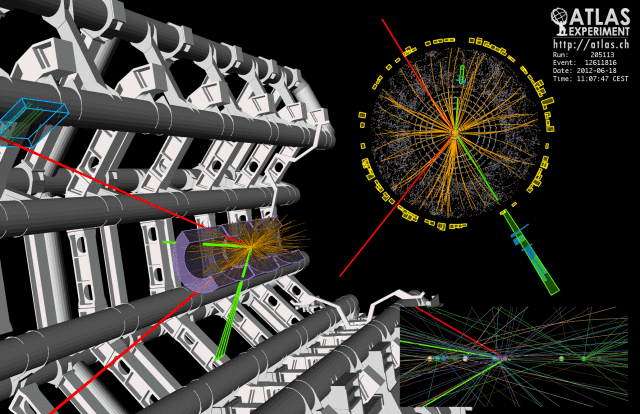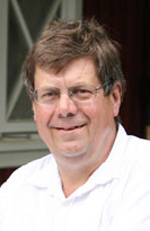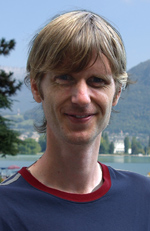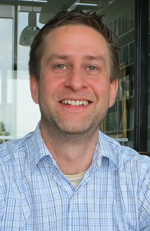KTH Physicists Cheer Higgs Discovery
NEWS
Particle physicists at KTH were jubilant following Wednesday’s announcement that the international research team working with the Large Hadron Collider in Switzerland had discovered nearly indisputable evidence of the existence of the elusive Higgs boson. First described theoretically in 1964, the Higgs is seen as the last major piece of the physics puzzle known as the Standard Model. “Everyone in our group is incredibly excited that our work has contributed to this historic discovery,” says researcher Bengt Lund-Jensen.

Nearly 50 years after physicists first postulated an invisible field conveying mass to sub-atomic particles, the AlbaNova Centre for Physics on the KTH campus echoed with cheers and applause on July 4 when scientists at the European organisation for Nuclear Research, CERN, announced that experiments with the Large Hadron Collider (LHC) showed a 99.9994 per cent confidence level that the Higgs boson had been observed.
The statement from Switzerland was carefully formulated to leave open the possibility that experimental data could be reinterpreted, saying that the findings were “consistent with” identification of individual particles of the Higgs field, but the evidence was strong enough to cause Champagne corks to pop in Stockholm. Scientists can now say with near certainty that two fundamental interactions—the electromagnetic force and the weak nuclear force—are two sides of a single natural phenomenon that gives elementary particles their mass. But, as with all good science, the discovery only opens the door to new questions.

“This is a fantastic day for physics, and it’s just the beginning of an exciting voyage as we begin studying this new particle,” said Assistant Professor Jonas Strandberg, one of the KTH researchers involved in the Higgs search through the international ATLAS experiment at CERN. Under the leadership of Professor Bengt Lund-Jensen, the experimental particle physics group at KTH has for two decades played a prominent role in construction and operation of the ATLAS electromagnetic presampler, the initial detector layer that measures the energy of particles produced by collisions in the LHC.

“Everyone in our group is incredibly excited that our work has contributed to this historic discovery,” Lund-Jensen said Wednesday. “We’ve only had three years to gather data with the LHC, and we’ve already met one of the most important goals that the particle accelerator was built to reach. I can’t wait to see what we’ll find in coming years.”
Alongside the experimentalists, theoretical particle physicists led by Professor Tommy Ohlsson are looking beyond the Standard Model to develop theories around such exotic phenomena as neutrino physics, extra dimensions and dark matter. “The Higgs completes the Standard Model, and now that we’ve seen it we can begin describing how all the other particles obtain their masses,” Ohlsson said. “Everyone who works with the LHC and the ATLAS project is worthy of a big pat on the back today.”

KTH’s theoretical particle physics group has constructed models describing the possibility of “universal extra dimensions” beyond the three spatial dimensions plus time familiar in our everyday world. Ohlsson says the Higgs discovery will pave the way for definition of the limits of these models, which in turn may help science one day understand the existence of the dark matter that appears to fill the cosmos with invisible mass. One key to this work is the theory of supersymmetry, in which each elementary particle is paired with a partner. Supersymmetry remains unobservable, but is used as a model to solve a range of theoretical problems.
“Supersymmetry is the best candidate we have today for describing dark matter,” Ohlsson said. “If we can’t find proof of it through experiments with the LHC, we have to look for other candidates. Excited states of the Higgs particle may turn out to be these alternative candidates. We’re all celebrating today, but there’s still plenty of work to do.”
By Kevin Billinghurst | kb2@kth.se

